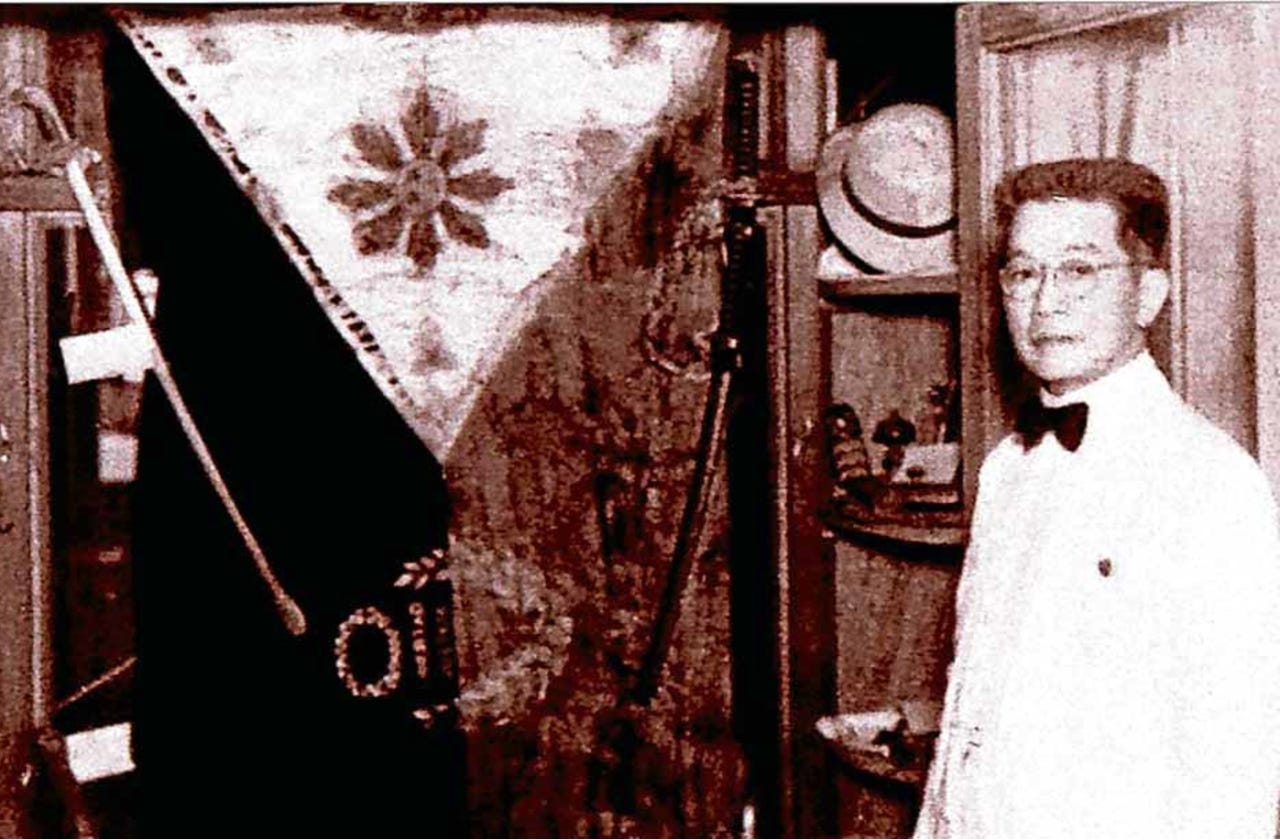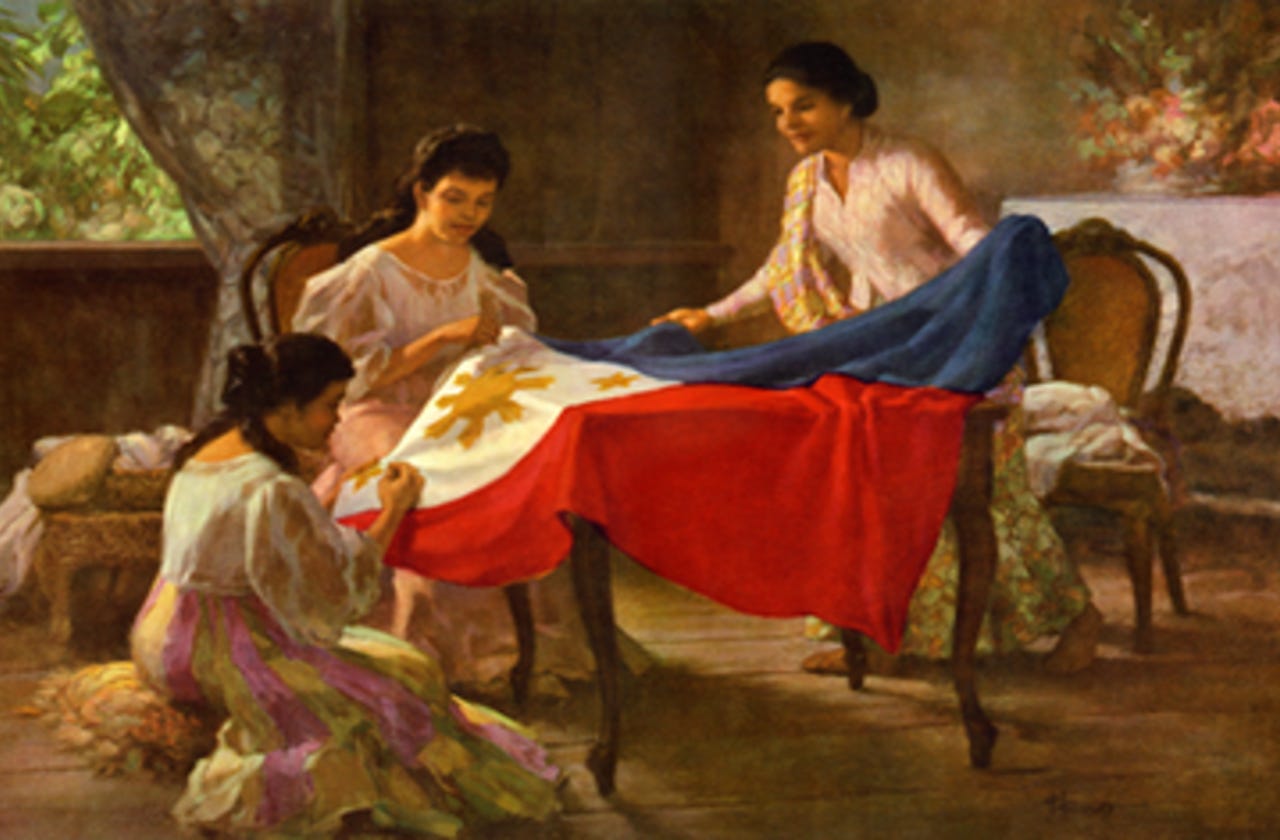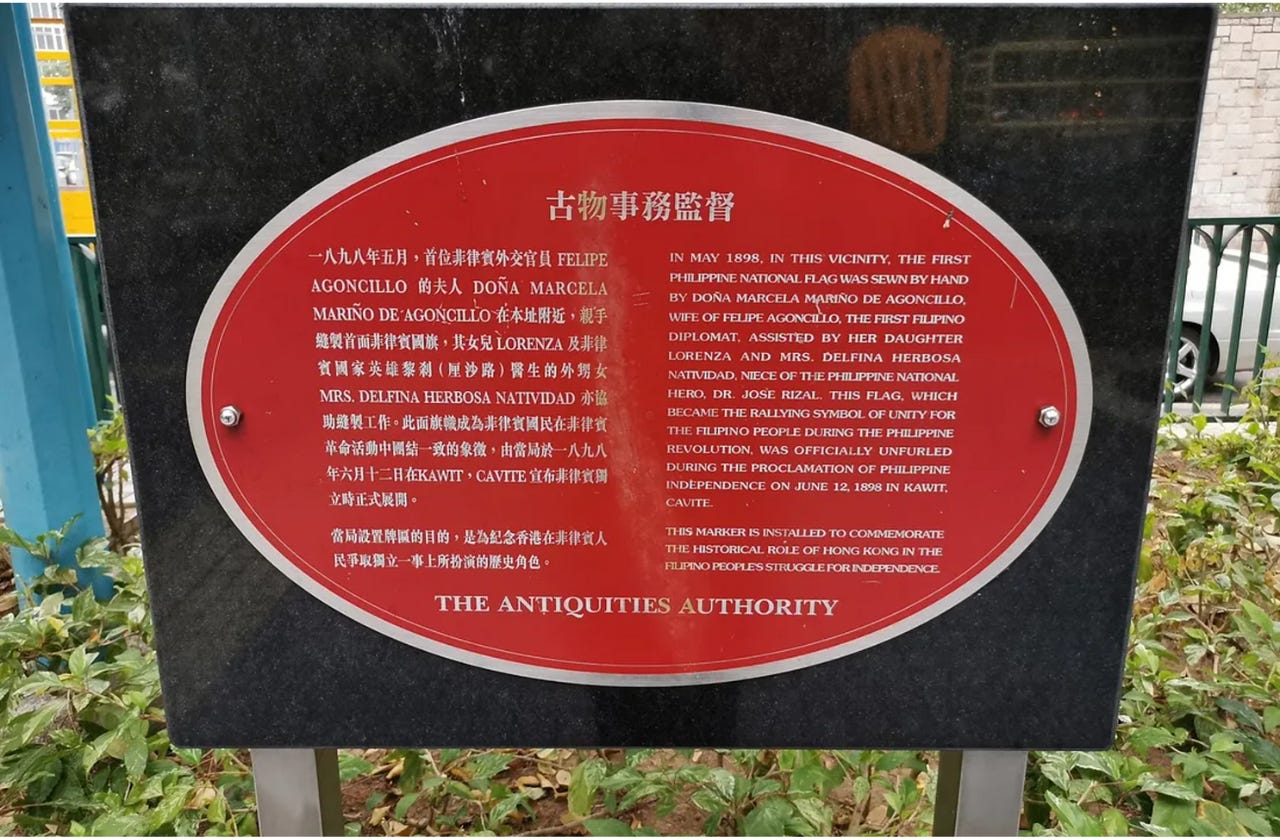A Brief History of the Philippine Flag
Uncovering the stories behind the colors, stars, and sun that define the Philippine flag.
Growing up as a Filipino, whether in the Philippines or as part of the diaspora, means being intimately familiar with the national flag and its iconic imagery: the sun with eight rays and three stars.
From the revolution against the Spanish rule, to the subsequent occupations by the American and Japanese forces, and through the administrations of presidents both good and bad, the Philippine flag, or “Pambansang Watawat ng Pilipinas”, has flown high.
Conceived by the nation’s first president, the Philippine flag has returned time and again, even after periods of suppression and foreign invasion, as a resilient symbol of the country's identity and struggle for sovereignty.
Emilio Aguinaldo and Other Unlikely Origins
The current design of the national flag was first conceived by the first president of the First Republic, President Emilio Aguinaldo. The flag also has some unusual origins, as it was not first sewn in the Philippines itself, but in Hong Kong by three seamstresses: Doña Marcela Mariño Agoncillo, the principal seamstress, Lorenza Mariño Agoncillo, and Mrs. Delfina Herbosa Natividad, the niece of national hero Dr. José Rizal. Filipino revolutionaries at the time were in exile, with many of them residing in Hong Kong.
The first national flag made its debut on May 28, 1898 during the Battle of Alapan, a fight that saw the Spanish troops surrender to Aguinaldo, shortly after Aguinaldo and many other revolutionaries returned to the Philippines from their exile. The town of Imus, Cavite remains a significant place in the history of the Philippine Revolution as the location where the flag was flown for the first time. This day was marked as National Flag Day in the Philippines to honor this victory.
During a session of the Malolos Congress, Aguinaldo championed the symbolism of the new flag of the republic, claiming the sun and its rays “stirred up Filipinos and spread the light over their world, piercing the clouds that enshrouded it; it is now the light which brightens every spot in the Philippine islands, and under its influence the Itas, Igorots, Manguians, and Moros, all of whom I believe were made in the image of God, and whom I recognize as our brethren, now come down from the mountains to join with us.” Here is a national flag, Aguinaldo argues, that represents resistance towards outside invaders, as well as the multi-ethnic and indigenous cultures of the new country.
Soon after the Declaration of Independence on June 12, 1898, the original flag was hoisted and unfurled in Kawit, Cavite.

Continued Occupation and a Ban on Revolutionary Symbols
Shortly after the Declaration of Independence, the US continued its European-like imperialism in the age of colonialism and got its sights set on Spain’s recently lost colonies, the newly independent Philippines being one of them. The flag of the Philippines continued to be raised in battles as an act of resistance against American aggression towards the new republic, which had earned its hard-fought independence. The year 1899 saw the first time the red field was up, to show that the nation was in a state of war.
The defeat of the First Philippine Republic saw the country succumbing to the aggression of America’s expansionist ideology. The Flag Act of 1907 was one law under the oppressive regime that declared any flags or symbols associated with the Katipunan were illegal. For a little more than a decade, the Philippine flag was repressed in all of American-occupied Philippine territory.
In 1919, the law was repealed and the Philippine flag was flown alongside the US flag. In 1920, the Philippine Legislature passed Act. No 2928 declaring it the official flag of the Philippines. In 1935, President Manuel L. Quezon issued Executive Order No. 23 which outlined specific technical description and specifications for the flag.
The flag saw another ban under initial Japanese occupation in 1941 until it was hoisted again by the establishment of the Second Republic of the Philippines in 1943. It was also during this time that the red field of the flag was hoisted up again by President Jose P. Laurel as declaration of a state of war.
It wasn’t until 1946 after the end of the war that the national flag was flown on the 4th of July as a symbol of a fully-fledged sovereign and self-governing nation, one of the first in all of Asia and one of the first nations to achieve independence in a post-colonial world.
Today the national flag of the Philippines stands as a symbol of a nation that, despite centuries of continued oppression from the West and from Japan, enjoys its own sovereignty and its right to self-determination. It’s a symbol that stands alongside other countries in ASEAN as well as on the broader global stage.





